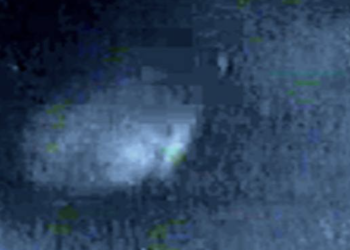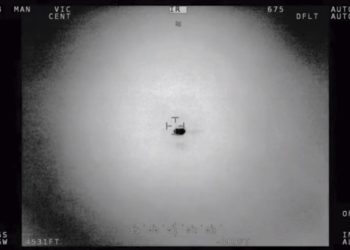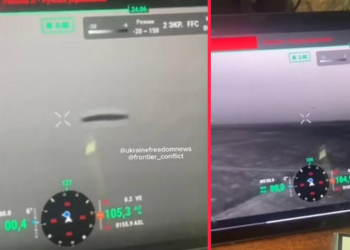In recent years, the term “Unidentified Anomalous Phenomena” (UAP) has replaced “Unidentified Flying Objects” (UFOs) in official discourse, reflecting a broader approach to unexplained observations not limited to airborne occurrences. UAPs encompass mysterious phenomena in the sky, underwater, and even in space, which defy conventional explanation.
This change in terminology marks a significant shift in how these phenomena are perceived—moving from speculative to serious, scientific, and strategic investigation. Why are UAPs attracting so much attention, and what has changed in recent years to put them in the spotlight? I have been fascinated by this subject for over a decade, and in this article, I would like to explain, as best as I can recent developments in the field of UAP research.
But first things first.
What Are UAPs?
The term UAP includes observations of objects or phenomena that exhibit characteristics beyond current human understanding or technology. These may involve:
- Aerial UAPs: Objects flying at extraordinary speeds, making sudden directional changes, or hovering without visible propulsion.
- Underwater UAPs: Fast-moving objects detected beneath the ocean’s surface, often described as Transmedium vehicles capable of operating in air and water.
- Space Phenomena: Unexplained movements or occurrences captured by satellites or astronauts.
The shift from UFO to UAP was formalized by organizations like the U.S. Department of Defense to encourage a more scientific and unbiased investigation. This change also aimed to remove stigma, enabling pilots, scientists, and military personnel to report sightings without fear of ridicule.
A Decade of UAP Developments
The past ten years have brought a series of revelations and investigations into UAPs, transforming public and governmental attitudes. Key milestones include:
2017: The AATIP Revelation
In 2017, The New York Times exposed the existence of the Advanced Aerospace Threat Identification Program (AATIP), a Pentagon initiative investigating UAPs. The report revealed:
- Declassified Videos: U.S. Navy pilots recorded objects defying the laws of physics, including the now-famous “Tic Tac” UFO seen off the coast of California in 2004.
- Pilot Testimonies: Pilots described objects moving without visible propulsion systems, executing instantaneous changes in direction, and disappearing at speeds beyond human capability.
This disclosure marked a turning point, spurring global curiosity and demanding further investigation.
2020: UAP Task Force
The U.S. Department of Defense established the UAP Task Force (UAPTF) in 2020. Its mission was to evaluate UAPs as potential threats to national security, emphasizing military sightings near restricted airspace. This formal acknowledgment legitimized the study of UAPs.
2021: Preliminary UAP Report
The Office of the Director of National Intelligence (ODNI) released a report summarizing 144 UAP incidents reported by military personnel between 2004 and 2021. Key findings included:
- 80 Cases Supported by Sensor Data: These sightings were corroborated by radar or infrared systems.
- “No Single Explanation”: While some incidents were attributed to natural phenomena or human-made objects, most remained unexplained.
- Recommendations for Study: The report stressed the need for additional data and a systematic approach to understanding UAPs.
2023: NASA Enters the Arena
In September 2023, NASA released its findings from an independent study on UAPs, focusing on how data could be collected to analyze these phenomena scientifically. The report concluded that while no evidence points to extraterrestrial origins, the lack of comprehensive data hinders definitive conclusions. NASA also announced a director to oversee its UAP research.
Congressional Hearings and Whistleblower Testimonies
In 2023 and 2024, U.S. Congress held hearings on UAPs, where former defense officials and whistleblowers claimed the existence of secret government programs retrieving non-human technology. Allegations included:
- Reverse Engineering Efforts: Whistleblowers suggested attempts to study recovered materials from unidentified craft.
- Public Transparency: Lawmakers emphasized the importance of sharing findings with the public to build trust and knowledge.
Why Are UAPs Attracting Attention?
Several reasons explain the growing focus on UAPs:
1. National Security Implications
UAPs are often observed near sensitive military installations or restricted airspace, raising concerns about potential espionage or advanced foreign technology. The possibility of adversaries deploying hypersonic drones or surveillance systems has prompted governments to take UAPs seriously.
2. Scientific Intrigue
Some UAPs exhibit flight characteristics beyond known aeronautical capabilities. Studying these phenomena could:
- Challenge our understanding of physics.
- Lead to breakthroughs in propulsion technology and materials science.
- Provide insights into new forms of energy or transportation.
3. Growing Public Interest
Declassified videos and transparent discussions have captured the public imagination. Social media platforms amplify sightings, while documentaries and media coverage make UAPs a topic of global fascination.
4. Global Collaboration
Other nations, including Canada, Japan, and Brazil, have reported UAP sightings and begun their own investigations. Collaborative efforts could unify scientific and technological resources to better understand these occurrences.
What Does Science Say About UAPs?
While many theories exist, ranging from extraterrestrial visitation to advanced technology or atmospheric phenomena, the scientific consensus remains inconclusive due to a lack of consistent data. Some leading hypotheses include:
- Advanced Human Technology: Hypersonic drones or experimental aircraft.
- Natural Phenomena: Atmospheric anomalies, ball lightning, or meteors.
- Extraterrestrial Origins: While no concrete evidence supports this, the possibility continues to fuel curiosity.
NASA and other agencies stress the importance of collecting high-quality data through sensors, radar systems, and AI analysis.
The Role of Government Transparency
Governments worldwide are under increasing pressure to disclose UAP-related information. In the U.S., laws like the National Defense Authorization Act of 2024 mandate reports on UAP incidents, aiming to address public concerns about secrecy. Greater transparency is seen as essential to building trust and fostering collaboration between agencies and the scientific community.
Looking Ahead: The Future of UAP Research
As the study of UAPs moves from speculation to serious inquiry, key priorities include:
- Improved Data Collection: Developing systems to detect, track, and analyze UAPs in real-time.
- Scientific Partnerships: Collaborations between government agencies, universities, and private institutions.
- Global Monitoring: Creating international databases to pool resources and insights.
The next decade could redefine humanity’s understanding of unexplained phenomena and potentially open new frontiers in science and exploration.











